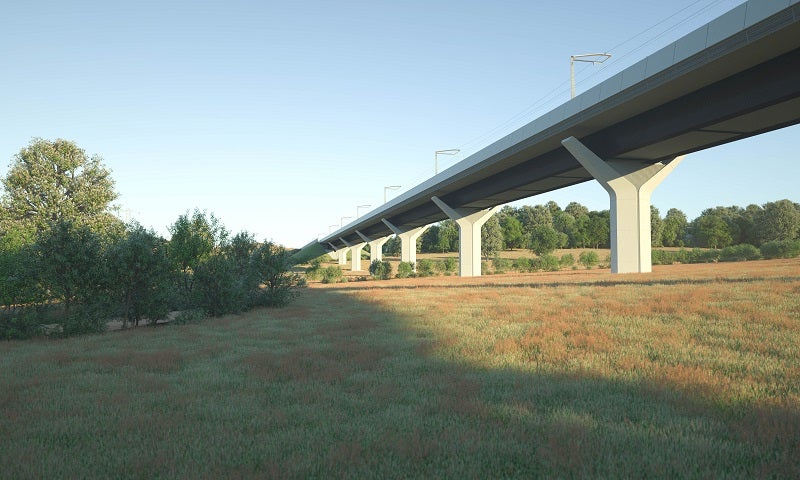
HS2 in the UK is set to deploy the new ‘double composite’ method for designing the Wendover Dean Viaduct in Buckinghamshire.
This approach involves two steel girders placed between two layers of concrete for establishing a strong yet lightweight span.
The 450m viaduct, which recently received approval from Buckinghamshire Council, will be the first railway viaduct in the country to deploy this approach.
It is one of the 50 viaducts that is being constructed on phase one of HS2 between London and the West Midlands.
The entities involved in the designing of the viaduct include EKFB, a team consisting of Eiffage, Kier, Ferrovial and BAM Nuttall, working with their design partner ASC, a joint venture between Arcadis Setec, COWI and specialist architect Moxon.
HS2 said in a statement: “Applying lessons from the use of double composite structures on the latest French TGV lines, the British team has cut the amount of embedded carbon in the viaduct by 7,433t, the equivalent of 20,500 return flights from London to Edinburgh.”
The slender design will reduce carbon emissions while cutting the concrete and steel and also minimises the silhouette of the structure.
To support the viaduct’s deck, around nine evenly spaced piers will be put to reflect the symmetry of the ground.
Before being brought together as giant lego blocks, the piers will be cast in fragments offsite to improve the original design.
With this method, the amount of work will be reduced and there will be less disturbance for local residents.
HS2 said: “The beams themselves will be made from weathering steel, which will age to a characteristically dark russet finish and echo the natural tones of the surrounding landscape.
“Total steel weight is around 1,400t and will be topped with a concrete deck, which will carry the track and built-in noise barriers.”
HS2 earlier initiated a process to select a team of specialist ground investigation contractors for Phase IIb of the high-speed railway line.


